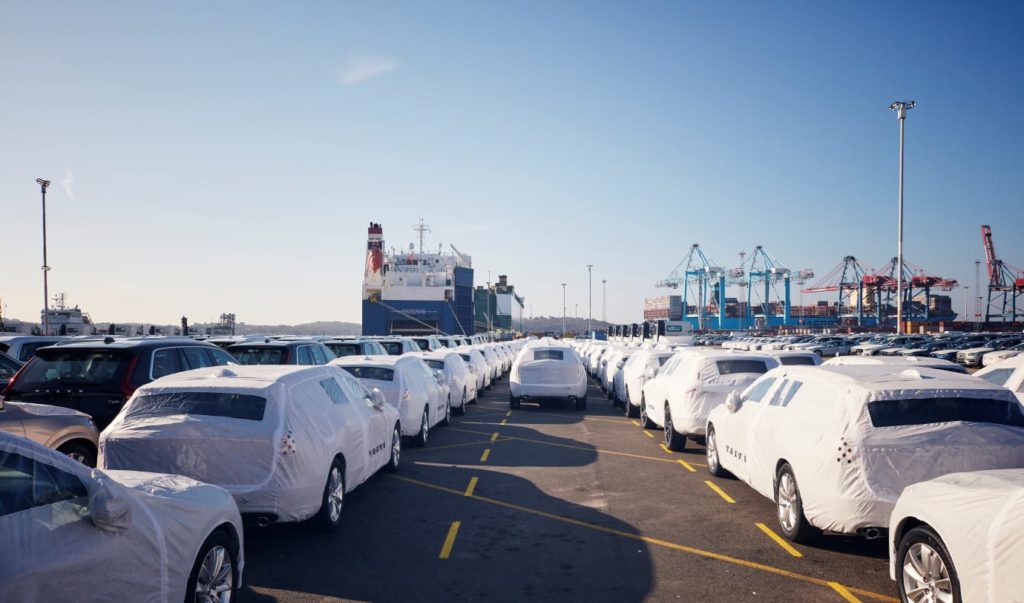
The Covid-19 pandemic has had a shattering impact in many sectors throughout the world, including the automotive industry. Although vehicle handling at the Port of Gothenburg has been largely affected, there are already signs of a recovery. Logent Ports and Terminals, which mainly handles transocean vehicle volumes, have also been able to broaden its customer offering.
Vehicle handling at the Port of Gothenburg is dealt with by the terminal operators Logent Ports and Terminals, Stena Line and Gothenburg Roro Terminal. The combined volumes at these companies make the Port of Gothenburg the largest vehicle handling port in Sweden.
The Volvo companies are the largest customers, both for exports and imports. At the end of March the Volvo companies shut down production in Gothenburg and Ghent although this did not have any major impact on the number of vehicles shipped during the first quarter, and the total fall in volumes was no more than one per cent.
“The effects of the Covid-19 pandemic will be reflected in the Q2 figures although we are already in a recovery process,” said Reine Johansson, chief executive of Logent Ports and Terminals in the Port of Gothenburg.
“We have noted a rise in vehicle exports since the end of April. At Logent Ports and Terminals we mainly serve the overseas markets, such as the USA, Australia, Japan, and China, where Volvo continues to report good sales figures.
Even within what is termed the High & Heavy segment, which includes dumpers, excavators, trucks, and other heavy-duty vehicles, production has restarted, and companies are reporting a steady increase in exports.
There are also significant imports of a number of passenger cars of different brands into Gothenburg, including Volvo, Nissan, and Renault, but the level of recovery is still not on a par with exports.
“But when import volumes do recover, we will have the capacity to handle more calls by vessels and higher vehicle volumes. We have large storage areas and we can offer customers rapid distribution and onward transport by rail and road,” said Reine Johansson.
As with the Port of Gothenburg as a whole, Logent Ports and Terminals has managed to keep open and operating despite the pandemic. Absenteeism due to illness continues to be low, and all maritime and terminal handling services are operating as normal.
Flexible solutions and a broader offering It is not only vehicles that are loaded and discharged at the quayside at Logent Ports and Terminals. When the automotive industry was struck by the Covid-19 pandemic, the vehicle terminal was able to use available space for other types of freight to a greater extent than was the case previously.
“The situation has allowed us to receive more project loads using the flexible space we have at our disposal. We have the capacity and capability, with a highly versatile machine park, operated by our skilled personnel, who also secure the load once it on the vehicle or load unit,” said Reine Johansson.
Another effect of the Covid-19 pandemic has been – and still remains to a certain extent – an imbalance in demand for products that are being transported, which means that freight units may need to be put into buffer storage before the product reaches its final destination. The vehicle terminal is able to offer this type of service.
“We can offer space within the customs area for both weather-protected and open storage, as an alternative to immediate collection. In recent years we have also worked hard to market the full scope of our offering, both in Sweden and internationally. We have seen the results, reflected in an increase in the number of enquiries for handling and storing of freight and materials, and which are also linked to the many large infrastructure projects that are currently under way in Gothenburg,” said Reine Johansson.
Fact file: Port of Gothenburg
The Port of Gothenburg is the largest port in the Nordic region. 30 per cent of Swedish foreign trade passes through the Port of Gothenburg as well as half of all container traffic.
The Port of Gothenburg is the only port in Sweden with the capacity to receive the world’s largest container vessels and has the broadest range of shipping routes within and outside Europe. The 25 rail shuttles that depart each day mean that companies throughout Sweden and Norway have a direct, environmentally smart link to the largest port in the Nordic region. The Port of Gothenburg has terminals for oil, cars, ro-ro, containers and passengers.














More Stories
AUO Returning to CES Showcase Next Generation Smart Cockpit 2025
Donaldson Ultra-Web technology aims to set the standard in industrial filtration for cleaner air and cost-savings
Hydrogen’s Role in Decarbonising Sports and Entertainment Events